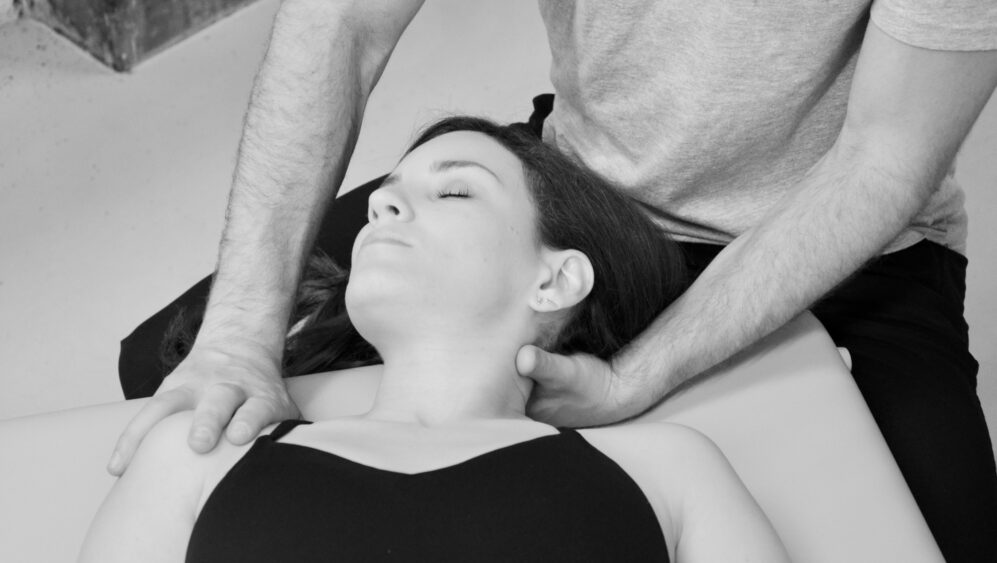Headaches
Sick and tired of headaches? You’re not alone on this one. As many as 9 of 10 North Americans suffer from headaches. Some headaches can be more consistent, more intense or longer lasting than others. We all share the common feeling of wanting them gone as quickly as they pop up. Here’s some information about headaches you may find useful:

Headache Triggers
This can sometimes be complex and multifactorial. Causes of a headache may include specific foods, environmental stimuli (noises, lights, stress, etc.), grinding your teeth, dehydration, and other behaviors (insomnia, excessive exercise, blood sugar changes, etc.). Cheeses, tannins in wine and MSG are also well known triggers of a headache.
About 5% of all headaches are secondary and they are like warning signals caused by physical problems. The remaining 95% are primary headaches, and can be further categorized into these groups: Tension, Migraine or Cervicogenic headaches. These types of headaches are not caused by disease; the headache itself is the primary concern.


Tension Headache – Presents as a band-like head pain with a pressing or tightening quality. These can be mild to moderate in intensity. They are not likely caused by underlying problems in the neck or head.
Tension headaches have frequent episodes that last for minutes to days. There is no associated nausea or vomiting but there may be other associated sensitivities including light (photophobia) or sound (phonophobia). They are commonly brought on by stress and can present with myofascial tenderness around the head and neck.


Migraine Headache – Appears as one sided pulsating pain of moderate or severe intensity in the head. Migraines can oftentimes present with a phenomena called an “aura”, a sensory disturbance that is experienced immediately prior to the migraine. These disturbances can include flashes of light, blind spots and other vision changes or tingling in your hand or face. They are not likely caused by underlying problems in the neck or head.
Migraines are recurrent and can last as little as 4 hours or as long as 72 hours. One or more of the following are present with a Migraine: nausea, vomiting, photophobia (light), and phonophobia (sound). The pain is aggravated by routine activities.


Cervicogenic Headache – The problem or source of these headaches comes from the head/neck and are mechanical in nature. It can affect one or more regions of the head, face, or both. Cervicogenic headaches are often associated with reduced neck range of motion, local neck tenderness, and trigger points that refer to the head.
When myofascial tender spots are the only cause, the headache should be diagnosed as tension-type headache, not cervicogenic headache.
How Experts Can Help
Proper diagnosis and headache classification is important for effective relief and treatment. In rare cases, a referral to a specialist and co-management is the most appropriate course of care but that will be determined upon assessment. The plan of management will be individualized to the patient’s specific case. The treatment options may include:
👨🏻🏫 Patient Education
🦴 Joint Mobs & Manipulation
💆♂️ Muscle Release Therapy
🪡 Acupuncture
⚡️ Electric Stimulation
🏋🏻♂️ Rehab/Exercise
🧘🏻♀️ Ergonomic and lifestyle changes
👨🏽⚕️ Referral and co-management
Evidence has demonstrated that these treatments including spinal manipulative therapy, can be effective with cervicogenic and tension-type headaches. Studies have demonstrated that care offered by Rehabilitation Therapists (i.e. Chiropractors, Kinesiologists, Occupational Therapists, Physiotherapists & Massage therapists) can also improve the intensity and frequency of migraines. If you haven’t already, consult a health professional about your headache concerns and see what they can do to help you!
References
- Bryans R, Descarreaux M, Duranleau M, et al. Evidence based guidelines for the chiropractic treatment of adults with neck pain. J Manipulative Physiol Ther 2014; 37: 42-63.
- Bryans R, Descarreaux M, Duranleau M, et al. Evidence based guidelines for the chiropractic treatment of adults with headache. J Manipulative Physiol Ther 2011; 34: 274-89.
- Bryans R, Decina P, Descarreaux M, Duranleau M, et al. Clinical Practice Guideline for the Management of Headache Disorders in Adults. Canadian Chiropractic Association (CCA) and Canadian Federation of Chiropractic Regulatory and Educational Accrediting Boards (Federation) Clinical Practice Guidelines Project. 2011 Jun.
- Dr. Vic Weatherall. Advance Chiropractic.https://advancechiro.on.ca/headaches/ December 2014
